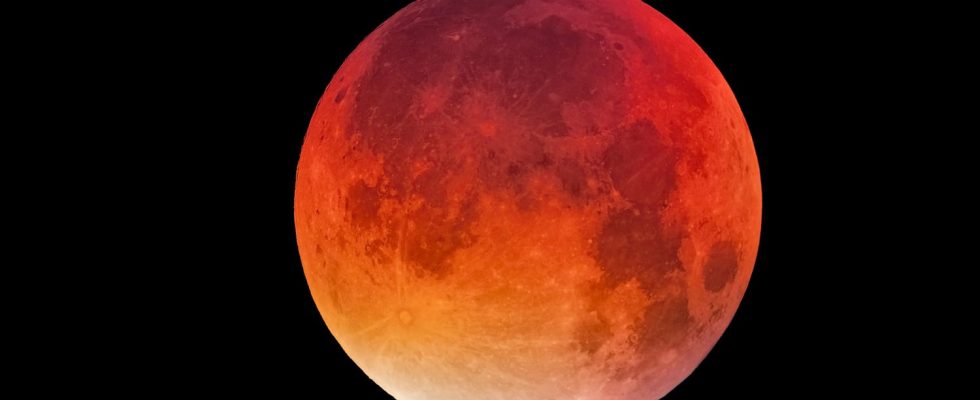The next lunar eclipse awaits us on October 28, 2023 at the start of the night. We give you all the details of this astronomical phenomenon to observe with the naked eye!
This Saturday, October 28, we will have the chance to admire a partial lunar eclipse in the evening sky. Although this event is not very spectacular, it will be visible to the naked eye from the beginning of the evening and constitutes the largest lunar eclipse before the year 2025. This still promises a beautiful moment which deserves to be look up at the Moon.
The lunar eclipse that awaits us will take place in several phases and will begin at 8:02 p.m., which will give the curious the opportunity to observe it without having to stay up late. At this time, the Moon, which will be above the eastern horizon, will slowly enter darkness. The penumbra phase will last several hours and the lunar disk will be completely darkened around 9:30 p.m. Our natural satellite will therefore be visible to the naked eye but its hue will be much darker than during an ordinary full Moon.
The second phase of the eclipse will begin at 9:35 p.m. with the Moon entering the Earth’s shadow. We will then be able to see an indentation forming near the south pole of the star. Little by little this spot will extend from left to right and will reach its maximum around 10:14 p.m. before disappearing at 10:52 p.m. Then, the Moon will remain in penumbra until 12:26 a.m., when the eclipse ends.
Next weekend, we should therefore witness a partial lunar eclipse since only a small portion of our night star will be plunged into the Earth’s shadow. This area of the lunar disk will not be completely invisible but may be tinted with an orange-red color. This color is linked to the passage of the Earth’s atmosphere by the Sun’s rays which are filtered by the components of the latter.
To enjoy this spectacle, you will not need any equipment since a lunar eclipse is not dangerous for the eyes, unlike a solar eclipse. If you want to admire the craters of our natural satellite and follow the event in more detail, you can bring a pair of binoculars or even a telescope. Although the Moon should be easily visible in the evening sky, you can use a sky map like the one on the site Stelvision and a compass to know in which direction it should appear. Apps like Sky Tonight (accessible on Google Play and on the App Store) also exist and make it possible to locate celestial objects.
